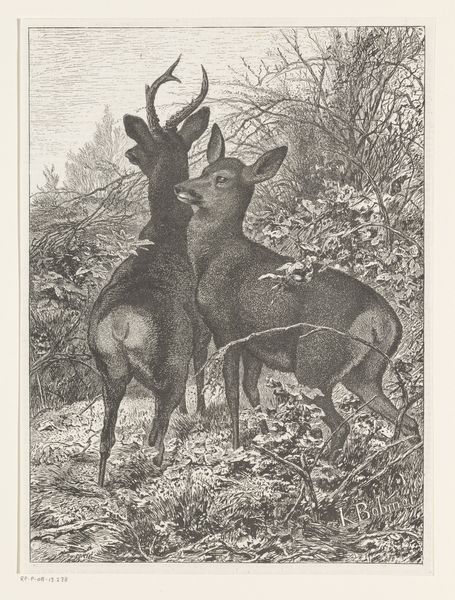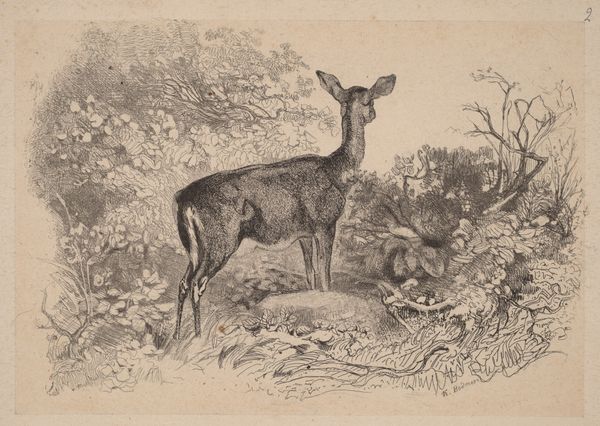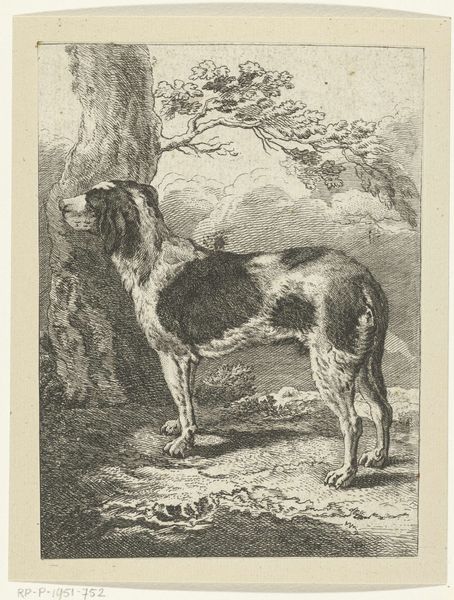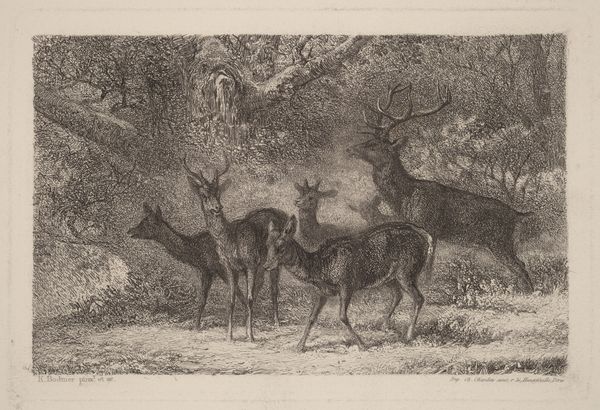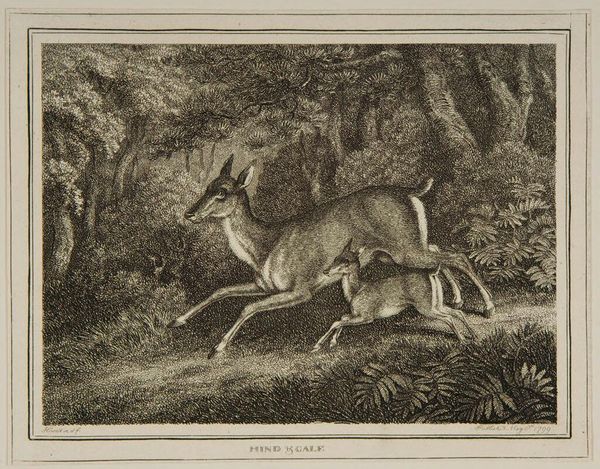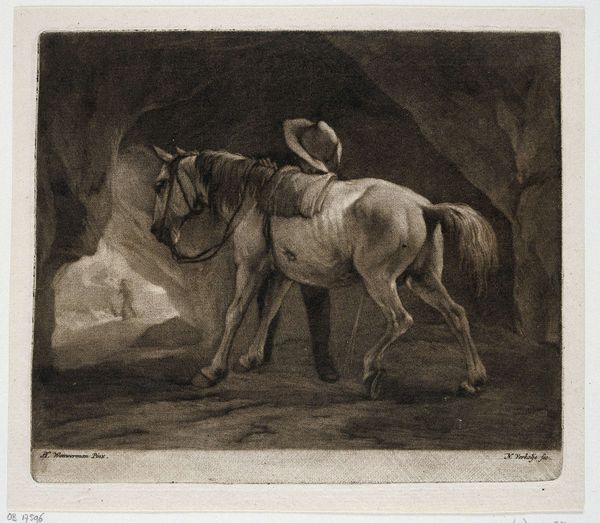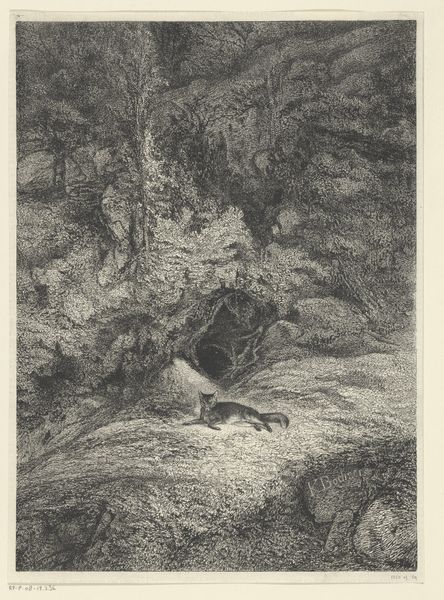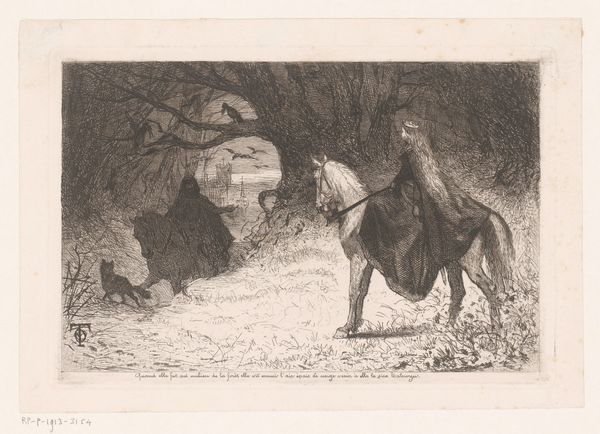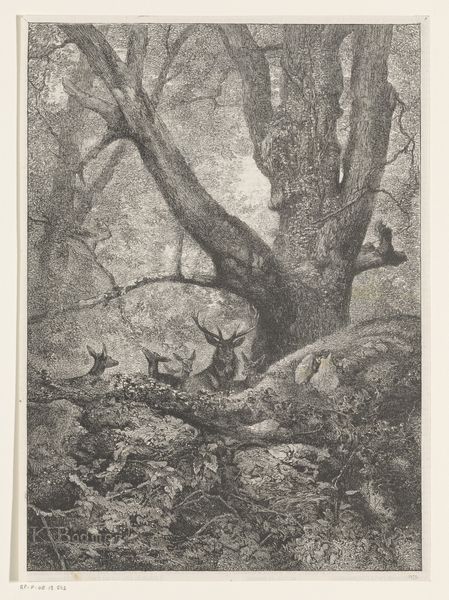
drawing, print
#
drawing
# print
#
landscape
#
realism
Copyright: National Gallery of Art: CC0 1.0
Editor: Here we have "Biche et Faon," a drawing and print, possibly by Karl Bodmer. I am really drawn to the delicate realism and the sense of quiet observation in the landscape. What do you see in this piece? Curator: For me, the print speaks to the changing role of the natural world in the 19th century imagination. Mass reproduction through prints made images like this accessible to a wider audience, popularizing particular views of nature. How do you think this image contributes to ideas about wilderness and our relationship with animals? Editor: That's interesting. I hadn't considered how prints democratize art. Do you think this idealized image of a mother and fawn influenced popular views of nature and conservation? Curator: Absolutely. These romantic depictions helped shape a sentimental appreciation for the natural world that directly contributed to the burgeoning conservation movement. Prints were powerful tools in shaping public opinion, more effective than paintings reserved for the elite. Notice the almost anthropomorphic tenderness depicted. Do you find that resonates with modern ideas of animal rights? Editor: It does, definitely. There's a vulnerability conveyed that tugs at your heartstrings, almost personifying the animals. I never thought of art prints as political tools. I guess it shows how deeply entwined art is with social movements and ideas. Curator: Exactly! By understanding the history of this print and its dissemination, we uncover not just artistic skill, but also how cultural values and political agendas are subtly woven into visual representation. Thank you for helping me view this work through a different lens! Editor: It has been a thought-provoking dive! Thank you, too!
Comments
No comments
Be the first to comment and join the conversation on the ultimate creative platform.


